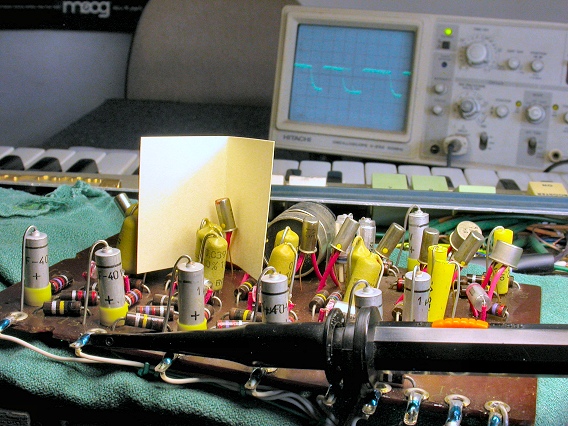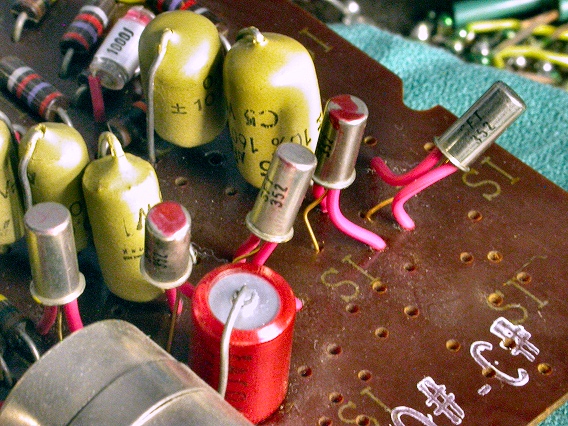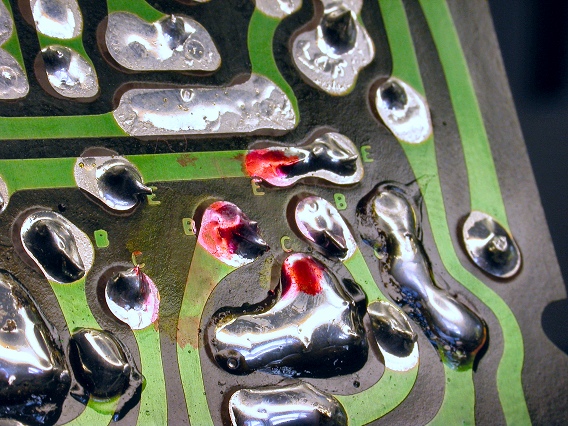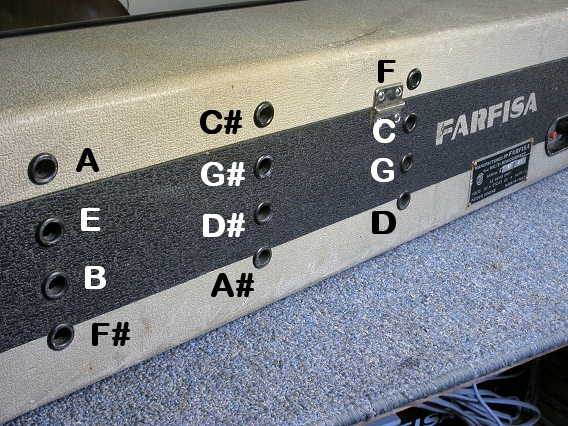| BustedGear.com |
| Shop | Repairs | Manufacturers | Resources | iFAQs | About |
|
|
|||
| Farfisa® Mini-Compact | 4: Divider Transistors | ||
|---|---|---|---|
|
Last Page < |
Page Bottom ∨ |
Next Page > |
|
|
|
|||
|
C# notes in this Farfisa Mini-Compact organ fluttered, as though their pitch was rapidly alternating between two octaves. As shown here, we clipped an oscilloscope probe to one of the bad tones and visually confirmed a fluttering waveform. We used freeze mist to help identify temperamental transistors. A folded card kept the air blasts from hitting the surrounding components. We also used a hair dryer to warm up transistors. If the flutter began or stopped with temperature change, then the transistor was suspect and replaced. |

|
|---|---|
|
Here's a close-up of several of the transistors. They are type SFT352, an outdated germanium transistor. Their polarity is PNP. |

|
|
Here you see the foil side of the circuit board. When you replace a transistor, pay close attention to the locations of its solder points. The transistors are closely spaced, making it easy to confuse one Base, Emitter or Collector lead with another. In this photo, one transistor's leads are identified, marked in red, and ready for de-soldering. |

|
|
We had to replace eight of the old germanium transistors before all the C#'s sounded true. We used new, silicon transistors, type 2N3906. Six of the new transistors are seen here. |
|
|
Finally, this photo shows the arrangement of the Mini-Compact's twelve tuning coils. Holes on the back of the organ's case let you tune the 12 oscillators without disassembling the organ. A screwdriver with a metal blade will affect the pitch of the note. In this case, turn the tuning slug, remove the screwdriver, check the pitch, and repeat as needed. |

|
| Farfisa® Mini-Compact | ||
|---|---|---|
|
Last Page < |
Page Top ∧ |
Next Page > |
|
|
|
|
|
Page design and content Copyright © Richard Diemer - All rights reserved |